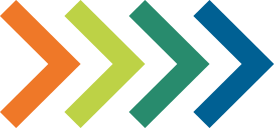


A workbench framework that allows tearable interface components, easy interaction with native drag-and-drop capabilities, and common layout for applications.Īn RCP application can use some or all of the components provided by the RCP toolkit.Standard user interface building blocks (JFace), like tables, wizards, and dialogues.Native operating system widets (SWT), which look great and perform well.
#UDIG TECHNOLOGIES. SOFTWARE#
A plug-in mechanism (OSGi) that defines what functionality each software component provides, and how the components can be extended.The RCP includes the following components: The Eclipse "Rich Client Platform" (RCP) is the generic software extension framework that underlies the widely-used Eclipse Java development environment. Testing frameworks, the Eclipse platform, the build system, and non-code components, like the issue tracking system, use tools and techniques proven in the wider Java community.

Data sources, renderers, tools, operations and more. All major components of the uDig platform are pluggable. Where existing open source technologies can provide funcitonality, the uDig architecture integrates them rather then re-building. The uDig platform has chosen technologies and design strategies with the goals of: Development Platform Features Design Philosophy
#UDIG TECHNOLOGIES. INSTALL#
Use the software update system to download and install optional extensions! GPS loading, specialized map graphics, and other community contributed tools. UDig supports in-place software upgrades! Once you install it once, you never have to re-install, just go to the software update menu to load the latest version. Includes thematic mapping of databases and WFS.Includes client-side reprojection for WMS.On-the-fly coordinate system reprojection.Fully interuptable, no waiting for a render to finish before starting another action.Draws multiple layers simultaneously, faster rendering times.Keeping layer interactions the same between data sources simplifies use understanding of the application – whether data is a local shape file, nearby database, or remote Web Feature Server, the same tools and operations apply. All data sources are searched through the same interface.All data sources are managed in the same catalogue.All layers are re-orderable, can be made semi-transparent, and can be turned off and on separately – layers received from the same server are not bound together into a monolithic layer stack.All read/write layers can be edited with the same tools.All layers can be queried with the same tool.All layers can be reprojected into arbitrary coordinate systems.The "internet GIS" philosophy means that we treat all map layers the same way, and try to provide the same capabilities for all layers, whether local or remote: UDig is built to be an "internet GIS", a system which can interact with data across potentially slow and/or unreliable networks using open and de facto standards, such as OpenGIS and ESRI standards.


 0 kommentar(er)
0 kommentar(er)
